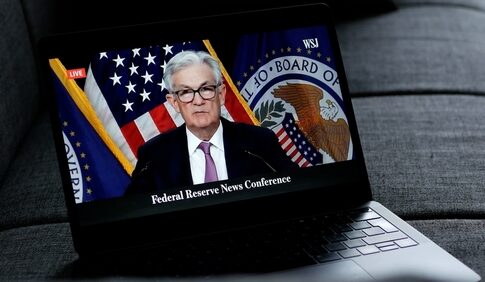Jerome Powell, the chairman of the Federal Reserve, is under pressure from President Trump to resign immediately, sparking a discussion about monetary policy and leadership at the US central bank. The demand comes after FHFA Director Bill Pulte claimed that Powell had misled lawmakers. Powell’s testimony regarding Fed headquarters renovations and interest rate policies is the main source of controversy.
Trump’s Call for Powell’s Immediate Resignation
President Donald Trump escalated his criticism of Federal Reserve Chairman Jerome Powell on Wednesday night, calling for his immediate resignation in a post on Truth Social. “‘Too Late’ should resign immediately!!!” Trump wrote, intensifying what appears to be a coordinated White House pressure campaign against the Fed chair. The demand comes amid growing tensions between the Trump administration and the Federal Reserve over monetary policy decisions, particularly regarding interest rates that Trump believes are hampering economic growth.
Trump’s call for Powell’s resignation follows accusations from Federal Housing Finance Agency Director Bill Pulte, who claimed Powell gave deceptive testimony to lawmakers during a Senate Banking Committee hearing. Pulte has publicly requested Congress to investigate Powell, stating: “I am asking Congress to investigate Chairman Jerome Powell, his political bias, and his deceptive Senate testimony, which is enough to be removed ‘for cause.'”
Trump calls for Powell's resignation, criticizes Fed chief https://t.co/ar4fScWH35
— Pulte (@pulte) July 2, 2025
Controversies Fueling the Conflict
At the center of this growing controversy are two primary issues. First, Powell’s testimony regarding renovations to the Federal Reserve’s Washington, D.C., headquarters has come under scrutiny. According to Pulte and other critics, Powell claimed that certain renovation plans were outdated while others represented necessary maintenance—statements Pulte contends were misleading. Representative Jim Jordan has indicated that lawmakers might launch an investigation into these claims.
The second and perhaps more consequential issue concerns monetary policy. Trump has repeatedly criticized Powell for maintaining steady interest rates rather than implementing cuts that Trump believes would boost economic growth. Treasury Secretary Scott Bessent recently compared the Fed to “an old person afraid of falling,” suggesting excessive caution regarding potential inflation from Trump’s tariff policies. This disagreement over economic strategy has been a consistent point of contention throughout Trump’s relationship with Powell.
🚨JUST ANNOUNCED: President Trump just called on Fed Chair Jerome Powell to resign immediately!
"Too Late” should resign immediately!!!"
“Fed Chair Should Be Investigated by Congress, FHFA Head Says” pic.twitter.com/A4dTk5IDrC— AJ Huber (@Huberton) July 2, 2025
Powell’s Response and Legal Position
Powell, who was originally appointed by Trump in 2017, has maintained that his removal before the end of his term in 2026 would not be permitted by law. He has publicly stated his intention to serve his full term and has emphasized his focus on achieving the Federal Reserve’s mandated goals of maximum employment, price stability, and financial stability. Despite political pressure, Powell has defended the Fed’s independence as critical to its economic management role.
The Federal Reserve has lowered rates by a full percentage point in 2024 but has maintained steady rates in 2025, a decision Powell defends as necessary while monitoring inflation trends. At recent hearings, Powell did not rule out potential interest rate cuts at upcoming Fed meetings, acknowledging that tariff policies could impact inflation forecasts. This cautious approach continues to frustrate the administration, which is pushing for more aggressive rate cuts.
Potential Successors Under Consideration
Reports indicate that Trump has already identified potential successors should Powell resign or be removed. A shortlist reportedly includes former Fed governor Kevin Warsh, former Council of Economic Advisers chairman Kevin Hassett, Treasury Secretary Scott Bessent, former World Bank president David Malpass, and current Fed governor Christopher Waller. Trump has mentioned having “two or three top choices” for the next Fed chair, with a formal decision expected when Powell’s term concludes in May 2026.
One strategy being considered involves appointing a new Federal Reserve Board member to fill a 14-year seat who could later transition into the chair position. This approach would allow the administration to establish influence within the Fed’s leadership structure while navigating the legal complexities surrounding Powell’s current position. The growing rift between Trump and Powell highlights fundamental differences in economic philosophy that will likely shape monetary policy debates in the coming months.


